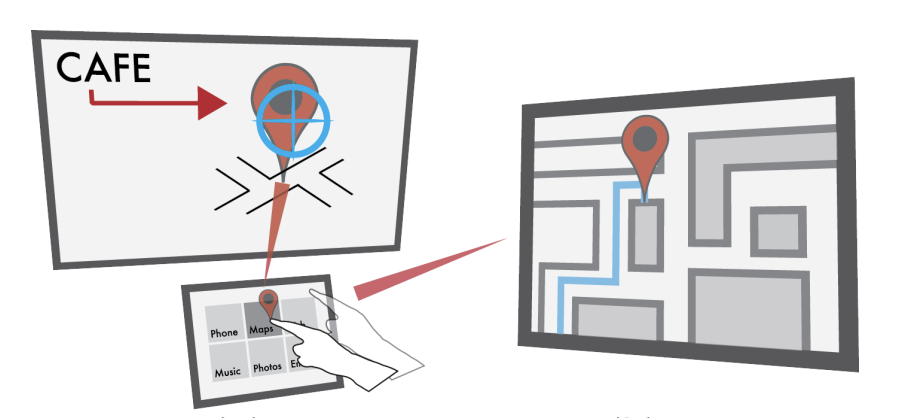Cross-Device Gaze-Supported Point-to-Point Content Transfer
Jayson Turner, Andreas Bulling, Jason Alexander, Hans Gellersen
Proc. ACM International Symposium on Eye Tracking Research and Applications (ETRA), pp. 19-26, 2014.

Abstract
Within a pervasive computing environment, we see content on shared displays that we wish to acquire and use in a specific way i.e., with an application on a personal device, transferring from point-to-point. The eyes as input can indicate intention to interact with a service, providing implicit pointing as a result. In this paper we investigate the use of gaze and manual input for the positioning of gaze-acquired content on personal devices. We evaluate two main techniques, (1) Gaze Positioning, transfer of content using gaze with manual input to confirm actions, (2) Manual Positioning, content is selected with gaze but final positioning is performed by manual input, involving a switch of modalities from gaze to manual input. A first user study compares these techniques applied to direct and indirect manual input configurations, a tablet with touch input and a laptop with mouse input. A second study evaluated our techniques in an application scenario involving distractor targets. Our overall results showed general acceptance and understanding of all conditions, although there were clear individual user preferences dependent on familiarity and preference toward gaze, touch, or mouse input.Links
Paper: turner14_etra.pdf
BibTeX
@inproceedings{turner14_etra,
author = {Turner, Jayson and Bulling, Andreas and Alexander, Jason and Gellersen, Hans},
title = {Cross-Device Gaze-Supported Point-to-Point Content Transfer},
booktitle = {Proc. ACM International Symposium on Eye Tracking Research and Applications (ETRA)},
year = {2014},
pages = {19-26},
doi = {10.1145/2578153.2578155}
}

